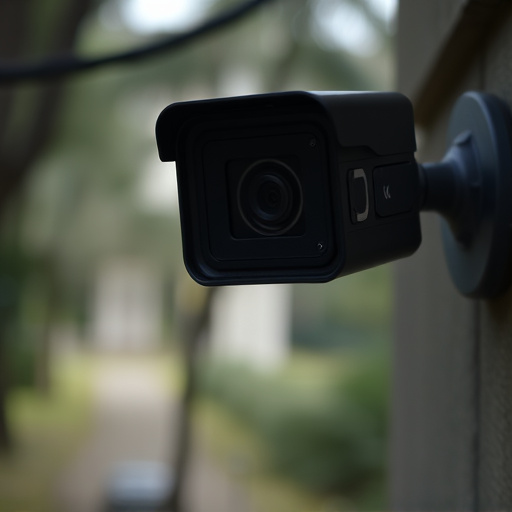Implementing hidden cameras for home monitoring requires a thorough understanding of legal boundaries and ethical implications, including privacy rights and strategic placement for optimal security without compromising aesthetics. Assess high-risk areas, consider camera types (wireless IP or wired CCTV), and set up a reliable network with mesh connectivity for comprehensive coverage. Regularly maintain and update the system to ensure privacy, security, and access to critical footage, while adhering to legal and ethical standards.
“Enhance your home’s security with a covert camera network—a powerful tool for peace of mind. Before installation, understanding legal and ethical considerations is paramount. Assess your property’s unique needs and potential entry points to strategically place hidden cameras for optimal visibility without compromising discretion.
Follow best practices for network setup, ensuring regular maintenance, updates, and backup solutions for seamless monitoring. Discover the ideal types of hidden cameras available today for effective home protection.”
- Understanding Legal and Ethical Considerations Before Installation
- Assessing Your Home's Security Needs and Potential Entry Points
- Choosing the Right Type of Hidden Cameras for Optimal Visibility and Discretion
- Best Practices for Network Setup and Camera Placement
- Maintaining Privacy and Security: Regular Checks, Updates, and Backup Solutions
Understanding Legal and Ethical Considerations Before Installation
Before installing a hidden camera network for home monitoring, it’s crucial to understand the legal and ethical considerations that come into play. In many jurisdictions, there are strict regulations governing the use of surveillance devices, particularly in private residences. Unauthorized installation or misuse of hidden cameras can result in severe legal repercussions, including fines and imprisonment.
Additionally, ethical concerns arise from the potential invasion of privacy. It’s essential to respect the right to privacy of all individuals who may be captured on the footage. For example, ensuring that all areas being monitored are within your control and not those of neighbors or guests is critical. Moreover, clearly communicating the presence of surveillance systems can help manage expectations and foster trust among family members, roommates, or employees who will be under observation.
Assessing Your Home's Security Needs and Potential Entry Points
Before installing a covert camera network, it’s crucial to assess your home’s security needs and potential entry points. Start by evaluating the areas most at risk, such as doors, windows, and valuable asset locations. Consider factors like proximity to public spaces, visibility from nearby buildings, and common access points for service providers or visitors. This analysis will guide you in strategically placing hidden cameras for home monitoring, ensuring comprehensive coverage without compromising aesthetics.
Identifying these entry points allows for the selection of cameras with suitable features—like motion detection, night vision, and wide-angle lenses—to effectively capture potential intruders. Additionally, consider the type of recording needed: live streaming, local storage, or cloud-based options. Tailoring your hidden camera setup to these specific needs enhances security while aligning with your home’s unique requirements.
Choosing the Right Type of Hidden Cameras for Optimal Visibility and Discretion
When selecting hidden cameras for home monitoring, understanding different types is key. Wireless IP cameras offer remote access via internet connections, ideal for discreet placement and real-time monitoring from anywhere. Their compact size allows them to be easily integrated into everyday objects like light switches or smoke detectors, maintaining optimal visibility while preserving discretion.
On the other hand, wired CCTV cameras provide stable signals and higher resolution footage, though they require physical wiring. Positioning these cameras strategically in hard-to-reach places ensures unobtrusive surveillance without drawing attention. Both options cater to unique needs, ensuring homeowners can choose the best hidden cameras for their specific requirements, enhancing security with minimal visual impact.
Best Practices for Network Setup and Camera Placement
When setting up a covert camera network for home monitoring, best practices begin with strategic network setup. Opt for reliable and secure internet connections to ensure uninterrupted surveillance. Use mesh networking or dedicated cameras with Wi-Fi capabilities to expand coverage, ensuring every corner of your property is within range. A robust and discreet infrastructure is key; consider hidden camera placements that blend into the environment, such as indoor appliances or outdoor landscaping elements.
Camera placement should balance comprehensive coverage with privacy considerations. Positioning them in high-traffic areas or dead angles can provide valuable insights while minimizing potential ethical concerns. Regularly review and adjust camera positioning to adapt to changes in your home’s layout or security needs. Additionally, ensuring each camera has a clear line of sight enhances video quality and reduces the risk of obstructions affecting surveillance capabilities.
Maintaining Privacy and Security: Regular Checks, Updates, and Backup Solutions
Maintaining a robust privacy and security system is paramount when deploying hidden cameras for home monitoring. Regular checks are essential to ensure the network remains secure, identifying any unauthorized access attempts or vulnerabilities promptly. Updates play a crucial role in fortifying the system against evolving cyber threats, ensuring that your hidden cameras for home monitoring stay ahead of potential hacks or breaches.
Implementing backup solutions adds another layer of protection. Offsite data backups guarantee that even if a device fails or is compromised, critical footage remains accessible, securing your peace of mind and the safety of your family or property. Regularly testing these procedures ensures a comprehensive security posture for your covert camera network.
Installing a covert camera network is a powerful way to enhance home security, but it requires careful consideration. By understanding legal boundaries, assessing your property’s unique needs, and choosing the right equipment, you can create an effective monitoring system. Best practices for setup and regular maintenance ensure optimal performance while preserving privacy. With proper precautions and knowledge about hidden cameras for home monitoring, you’ll have a robust security network tailored to your residence.
